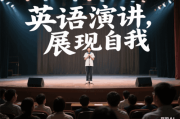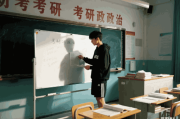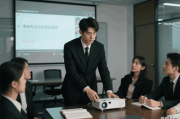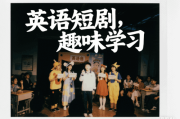
《卫报》和《经济学人》作为考研英语文章来源的大咖,几乎每年都有文章被选做真题,不用说大家也知道其重要性。所以了解经济学人的文章风格对于考研人来说是很重要的,为了锻炼大家的感觉,从今天起每天和小编约一篇《经济学人》的原文章吧~
Like pearls falling into a jade plate
Mar 30th 2006
From The Economist print edition
WHEN Wu Man arrived in New Haven1, Connecticut, from Beijing in 1990 she spoke no English and ★gambled on[1] surviving with the help of her pipa, a traditional lute-like Chinese instrument. She has succeeded (A) (triumph), working her way from New York's Chinatown to Carnegie Hall2, where she gives her debut recital on April 6th.
The pipa is a sonorous, four-stringed, pear-shaped instrument held upright on the lap. Its strings used to be silk but are now steel, which resonates better. The fake fingernails on Ms Wu's right hand ★pluck[2] the strings, while her left hand fingers the ★frets[3]. (1)She produces an (B) (astonish) range of colours and moods from a 2,000-year-old instrument which produces a sound, observed a poet from the Tang dynasty, like “pearls falling into a jade plate”.
Ms Wu is a ★virtuoso[4] interpreter of traditional music, creating (C) (haunt) exotic waves of sound with ★pizzicatos and tremolos[5] (the plucking of one string with all five fingers consecutively). But (D) (evoke) of dropping pearls soon fade to Jimi Hendrix3. During her time in America, (2)Ms Wu has daringly expanded the pipa's range, playing jazz, bluegrass4 and Bollywood5 with eclectic instrumentalists—and inspiring (E) (number) works from prominent composers.
The pipa can sound gently lyrical or (F) (aggress) modern, which is why, says Ms Wu, it attracts such composers as Terry Riley, Philip Glass, Tan Dun and Bright Sheng, all of whom have written for her. She was the first to partner the pipa with an endongo (an eight-stringed Ugandan instrument), an Appalachian banjo and a string quartet6. She was also, she says, the first to play jazz on the pipa.
All this happened after she arrived in America. Young Chinese musicians are now ubiquitous in American and European conservatories, competitions and concert halls, but during China's cultural revolution the performance of Western music was greatly restricted. Traditional instruments, however, were (G) (courage), and Ms Wu, born in 1964 in Hangzhou, began studying the pipa when she was nine.
She entered the Beijing Central Conservatory of Music (where she heard Western music for the first time) and became the first (H) (receive) of a masters degree in the pipa. She was awarded a ★tenured[6] faculty position. But her curiosity about the West proved (I) (resist). Colleagues who had emigrated to the United States warned her that there was no interest in Chinese traditional music, (3)but, undaunted, she packed seven instruments (including pipas, a zither and a dulcimer) and set off.
During the first two difficult years she learnt English and cried a lot. She joined other Chinese musicians and began performing in New York's Chinatown, (J) (rehearse) in the basement of a dry-cleaner. (4)American musicians would approach her after concerts, (K) (fascination). David Harrington of the Kronos Quartet said that the first time he heard her play was like the first time he heard Jascha Heifetz, a master violinist.
Mr Harrington chose her to perform in the quartet's recent Bollywood- (L) (inspiration) recording because he wanted one person to create many different sounds. (5)Ms Wu, with her “large sonic vocabulary”, was uniquely qualified. She also attracted the attention of Yo Yo Ma, a cellist with whom she now frequently performs as a member of his Silk Road ★Ensemble[7].
Pipa players and audiences in China are also becoming more open minded; she caused (M) (exciting) when she performed in Beijing with the Kronos Quartet ten years ago. “That's my hope,” she says, “that (6)the next generation know there is another way for traditional instruments to survive.”
[QUIZ]
1. 用文中空白后括号内单词的适当(相关)形式填空(可以是动词、形容词及副词,注意时态、语态、比较级乃至派生词等):
如:WHEN Wu Man ________(arrival) in New Haven, Connecticut, from Beijing in 1990 she spoke no English.此空白处应填arrived.
2. 将文中划线部分翻译成英语:
[NOTES](LONGMAN)
[1]gamblev.以……为赌注,孤注一掷to do something that involves a lot of risk, and that will not succeed unless things happen the way you would like them to
gamble on
They're gambling on Johnson being fit for Saturday's game.
gamble something on something
Potter gambled everything on his new play being a hit.
[2]pluckv.弹拨to pull the strings of a musical instrument
pluck at
Someone was plucking at the strings of an old guitar.
[3]fretn.音品;安在某些弦乐器如吉他弹拨处的一个或多个隆起物one of the raised lines on the fretboard of a guitar etc
[4] virtuoso plural virtuosos
AP n. 技术超群的表演者(尤指音乐)someone who is a very skilful performer, especially in music:
violin virtuoso Stephane Grappelli
—virtuoso adjective [only before noun]
a virtuoso performance
a virtuoso pianist
[5] pizzicatos and tremolos拨奏曲和颤音
[6]tenure
[UC]享有终身教授的权利 SEC the right to stay permanently in a teaching job:
It's becoming increasingly difficult to acquire academic tenure.
—tenured adjective:
a tenured professor
a tenured position
[7]ensemble<法>全体, [音]合唱曲, 全体演出者
[TIPS & BACKGROUND]
1. 纽黑文(New Haven):美国康涅狄格州(Connecticut)南部城市,临长岛海湾,对外贸易港口。人口12.4万(1984),大市区41.7万(1980)。建于1638年。有钟表、仪表、橡胶制品、枪炮、弹药、电气制品、造船等工业。著名的耶鲁大学就在这座小城,纽黑文还是美国比萨的起源地。每天,都会有上百美国人从纽约或波士顿驾两三个小时的车到纽黑文品尝这里的比萨。其中,又以"Frank Pepe's''及"Sally"的比萨最著名,周末你可得排上几个小时,才能尝到香喷喷的比萨!
2. 卡内基音乐厅(Carnigie Hall):世界上最著名的音乐圣殿,位于纽约57号大街154号。1891年由钢铁大王卡内基投资兴建,当时,那里还属于曼哈顿颇为荒凉的郊区。这座意大利文艺复兴工的音乐厅在设施上几乎达到了无可挑剔的境界。卡内基音乐厅建成公演的那天,卡内基特地邀请柴可夫斯基担任乐队的客座指挥,所有纽约自认品味高雅的家庭在音乐厅外等了至少一小时,为的只是能买到一张入场券。几乎20世纪所有的古典音乐巨匠都以能在卡内基音乐厅演出为荣。郎朗是中国钢琴演奏史上第一位在卡内基大厅作音乐会现场录音的钢琴大师。《千手观音》领舞、残疾人艺术家邰丽华也在此演出过。
3. 蓝草音乐(Bluegrass):代表早期传统乡村音乐的一种风格:由美国东南部的阿巴拉契亚山脉地区的“乡下人”组成的以弦乐器为主的乐队,演唱传统的歌曲,以高音人声作和声,基本的伴奏乐器包括:小提琴、吉他、曼陀林、五弦班卓琴和由小提琴制造者约翰.多皮埃拉(John Dopyera,1893-1988年1月3日)发明的多布(Dobro)——一种用来以机械方式放大吉他声音的铝制圆锥体。
4.宝莱坞(Bollywood):是位于印度孟买的广受欢迎的电影工业基地的别名,由孟买(Bombay)和好莱坞(Hollywood)结合而成。尽管有些纯粹主义者对这个名字十分不满,看上去“宝莱坞”还是会被继续沿用下去,甚至在牛津英语大词典中也已经有了自己的条目。宝莱坞也被称作是“印地语(Hindi)的影院”,其实乌尔都语(Urdu)诗歌在这里也相当常见,同时英语的对白和歌曲所占的成分也正在逐年增加。不少影片中的对白中都有英语单词短语,甚至整个句子。一些电影还被制成两种或三种语言的版本(使用不同语言的字幕,或者不同的音轨)。宝莱坞和印度其它几个主要影视基地(泰米尔语 - Kollywood,特鲁古语(Telugu),孟加拉语(Bengali) - Tollywoord,坎拿达语(Kannada)和马拉亚拉姆语(Malayalam)等)构成了印度的庞大电影业,每年出产的电影数量和售出的电影票数量居全世界第一。宝莱坞对印度以至整个印度次大陆,中东以及非洲和东南亚的一部分的流行文化都有重要的影响,并通过南亚的移民输出传播到整个世界。宝莱坞的电影通常是音乐片。几乎所有影片中都至少有一段唱歌跳舞的场面。
5. 弦乐四重奏(string quartet):四件乐器是小提琴二、中提琴、大提琴各一。典型模式为四个乐章(与交响曲相同)。
[APPENDIX]
各种西洋乐器人声中英文对照
一、Woodwinds: 木管乐器
1.Piccolo 短笛
2.Flute 长笛
3.Soprano Recorder 高音竖笛
4.Oboe 双簧管
5.English Horn 英国管
6.Bassoon 大管
7.Contrabassoon 低音巴松
8.Clarinet in Eb 降E调单簧管(小黑管)
9.Clarinet in A A调单簧管
10.Clarinet in Bb 降B调单簧管
11.Bass Clarinet 低音单簧管
12.Soprano Saxophone 高音萨克斯
13.ALto Saxophone 中音萨克斯
14.Tenor Saxophone 次中音萨克斯
15.Baritone Saxophone 上低音萨克斯
16.Alto Flute 中音长笛*
17.Bass Flute 低音长笛
18.Oboe d' Amore 双簧管的一种
19.Piccolo Clarinet 高音单簧管*
20.Alto Clarinet 中音单簧管(Eb调的,属于低音单簧管)
21.Contrabass Clarinet 倍低音单簧管
22.Descant Recorder 高音竖笛
23.Alto Recorder 中音竖笛
24.Tenor Recorder 次中音竖笛
25.Bass Recorder 低音竖笛
26.Bagpipes 风笛
27.Basset Horn 巴赛管(单簧管)
28.Panpipes 排萧
二、Brass: 铜管乐器
1.Cornet 短号
2.Trumpet in Bb 降B调小号
3.Trumpet in C C调小号
4.Flugelhorn 夫吕号(行进乐队常用)
5.Horn in F F调圆号
6.Trombone 长号
7.Tenor Trombone 次中音长号
8.Bass Tromone 低音长号
9.Baritone(T.C.) 次中音号
10.Baritone 次中音
11.Euphonium 小低音号
12.Tuba 大号
13.Bass Tuba 低音大号
14.Piccolo Cornet 高音短号
15.Piccolo Trumpet in A A调高音小号
16.Bass Trumpet in C C调低音小号
17.Alto Trombone 中音长号
18.Contrabass Trombone 倍低音长号
三、Pitched Percussion: 有音高打击乐器
1.Timpani 定音鼓
2.Bells 排钟
3.Glockenspiel 钢片琴
4.Crystal Glasses
5.Xylophone 木琴
6.Vibraphone 颤音琴
7.Marimba 马林巴琴
8.Bass Marimba 低音马林巴琴
9.Tubular Bells 管钟
10.Chimes 钟琴
11.Steel Drums 钢鼓
12.Mallets 三角木琴
四、Percussion: 小打击乐器
1.Percussion 小打击乐器组
2.Wind Chimes
3.Bell Tree 音树
4.Triangle 三角铁
5.Crotales 响板
6.Finger Cymbals 手指小镲
7.Sleigh Bells 马铃
8.Cymbals 大镲
9.Cowbell 牛铃
10.Agogo Bells (由两个锥型铁筒组成,比牛玲音高)
11.Flexatone
12.Musical Saw 乐锯
13.Brake Drum 闸鼓
14.Tam Tam 大锣
15.Gong 锣
16.Claves 响棒
17.Slapstick 击板
18.VibraSlap
19.Sand Block 沙轮
20.Ratchet 齿轮剐响器
21.Guiro (木制,用铁棍剐)
22.Cuica (发出的声音象狗叫的拉丁乐器)
23.Maracas 沙槌
24.Castanets 响板
25.Wood Blocks 盒棒
26.Temple Blocks 木鱼
27.Log Drum 木鼓
28.Tambourine 铃鼓
29.Whistle 哨
30.Siren 汽笛
31.Jawbone
32.Anvil 乐钻
五、Drums: 鼓
1.Drum Set 架子鼓
2.Bongo Drums 邦加鼓(用手指敲的小鼓,夹在两腿间)
3.Timbales 蒂姆巴尔鼓
4.Conga Drums 康加鼓(橄榄型)
5.Snare Drum 小军鼓
6.Quad Toms 4组鼓筒鼓
7.Quint Toms 五组筒鼓
8.Tenor Drum 次高音鼓
9.Tom Toms 筒鼓
10.Roto Toms 轮鼓
11.Bass Drum 低音鼓
六、Plucked Strings: 弹拨乐
1.Harp 竖琴
2.Guitar 吉他
3.Scoustic Guitar
4.electric Guitar 电吉他
5.Banjo 班卓
6.Bass 贝司
7.Acoustic Bass 非电贝斯
8.Electric Bass 电贝司
9.String Bass 弦贝司
10.Mandolin 曼陀林
11.Lute 琉特琴
12.Ukulele 夏威夷四弦琴
13.Zither 齐特尔琴
14.Sitar 锡塔尔琴
七、Keybords: 键盘
1.Piano 钢琴
2.Organ 管风琴
3.Harpsichord 大键琴
4.Celesta 钢片琴
5.Accordion 手风琴
6.Clavichord 古钢琴
7.Harmonium 脚踏式风琴
8.Synthesizer 电子合成器
八、Chorus: 合唱
1.Soprano 女高
2.Soprano Ⅰ 女高1
3.Soprano Ⅱ 女高2
4.Mezzo-Soprano 女次高
5.Contralto 女低
6.Alto 女低
7.Counter-Tenor
8.Tenor 男高
9.Tenor Ⅰ 男高1
10.Tenor Ⅱ 男高2
11.Baritone 男中
12.Bass 男低
13.Bass Ⅰ 男低1
14.Bass Ⅱ 男低2
15.Voice 人声
16.Vocals 元音
九、Strings: 弦乐
1.Violin 小提琴
2.Violin Ⅰ 小提琴1
3.Violin Ⅱ 小提琴2
4.Viola 中提琴
5.Cello 大提琴
6.Violoncello 低音提琴
7.Contrabass 低音提琴
8.Double Bass 倍低音提琴
9.Solo Violin 独奏小提琴
10.Solo VIola 独奏中提琴
11.Solo Cello 独奏大提琴
12.Solo Bass 独奏低音提琴
13.Viola d' Amore
十、Handbells: 手铃
1.Handbells 手铃
2.Handbells(T.C) 手铃(中音)
全文翻译
大珠小珠落玉盘
1990年,吴曼从北京奔赴康涅狄格州纽黑文市的那会儿,一句英语也不会说,生存的希望完全寄托在她的琵琶(类似鲁特琴的中国传统乐器)上。现在她已经获得了骄人的成就——经过努力拼搏,终于从纽约的唐人街来到了卡内基音乐厅,并将于4月6日在那里首次举办独奏音乐会。
琵琶是一种音色清亮的四弦乐器,其形如梨,演奏时被竖抱于膝上。琵琶弦以前多为丝制,现已改为钢弦,共振效果更佳。吴曼用右手上的假指甲拨弦,而用左手手指压盖音柱。在她的弹奏下,这种有着2000年历史的乐器发出的一曲曲乐音音色和韵味都令人惊叹不已,正如一首唐诗所说,像“大珠小珠落玉盘”一般。
吴女士使用弹拨和震音(用5根手指连续拨动一根弦),奏出了众多令人萦怀的异国曲调,其诠释传统音乐的造诣之深可见一斑。但是,“大珠小珠落玉盘”的召唤力很快就消失殆尽,一如当年的“吉米·亨德里克斯经验”乐队。在美国期间,吴女士大胆扩展了琵琶的演奏范围,与相应的乐器手共同弹奏爵士乐、蓝草音乐、宝莱坞电影音乐,并且激发一些知名作曲家谱写了众多作品。
吴女士说,琵琶之声时而柔美如诗,时而激越且不乏时代感,这就是它之所以能吸引泰瑞·莱利、菲利普·格拉斯、谭盾、盛宗亮等作曲家的缘故,而这些人都曾为其谱过曲子。她是第一个把琵琶与乌干达竖琴、阿帕拉契五弦琴以及弦乐四重奏组合在一起的人,也是第一个用琵琶弹奏爵士乐的人。
一切均始于她抵达美国之后。现如今在美国和欧洲的音乐学院、各类比赛以及音乐厅里,年轻的中国音乐家比比皆是。要知道,在中国“文化大革命”时期,演奏西洋音乐是受到严格限制的,国家提倡使用传统乐器,于是乎,1964年出生于杭州的吴曼9岁时开始学弹琵琶。
她考进了北京中央音乐学院(在那里她第一次听到了西洋音乐),随后获得中国第一个琵琶专业硕士学位并被授予终身教授职位。但是,她实在掩饰不住对西方的好奇心。移居美国的同事告诫她说,美国人对中国传统音乐毫无兴趣,但她并没有打退堂鼓,带上七件乐器(其中包括琵琶、古筝和一把扬琴)就出发了。
头两年的生活很艰辛,她学习英语,也哭过很多次。她加入了其他中国音乐家的行列,开始在纽约唐人街演出,在一家干洗店地下室里排练。几场音乐会下来,美国的音乐家们被迷住了,开始主动跟她打交道。“克诺斯四重奏”乐队的戴维·哈林顿说,他起初听她演奏时的感觉就像头一次听小提琴大师雅沙·海飞兹演奏一样。
“克诺斯四重奏”乐队最近录制一张取材于宝莱坞电影音乐的唱片时,哈林顿看中了她,因为他需要一个人能独自奏出多种不同的声音效果。拥有“丰富的声汇量”的吴女士当之无愧。她也引起了马友友的注意——作为这位大提琴家“丝绸之路”演奏团的一员,她现在经常和他同台表演。
中国的琵琶演奏者和听众的思想也越来越开放,十年前吴曼与克诺斯四重奏一起在北京的演出曾经轰动一时。她说:“我希望下一代中国人明白,还有一种能让传统乐器经久不衰的方法。”
[KEY TO QUIZ]
A. triumphantly (triumph胜利-triumphant胜利的,洋洋得意的-triumphantly成功地,自豪地)
B. astonishing (注意区分astonished感到惊讶的和astonishing令人惊讶的)
C. hauntingly (haunt萦绕心头-haunting常浮现于脑海的,难忘怀的-hauntingly副词,此处修饰形容
词exotic,故应填入副词。注意haunted的意思是“神鬼出没的,闹鬼的”)
D. evocations(此处应填名词,evoke唤起,引发-evocation n.再现,描绘)
E. numerous(此处应填入由number派生而来的numerous-大量的,许多的)
F. aggressively(修饰形容词modern,应填副词,aggress v.攻击,侵犯-aggressive adj.好斗的,挑衅的,
有闯劲的-aggressively adv.侵略地,有攻势地)
G. encouraged(此处应填动词的被动语态)
H. recipient (此处应填表示“人”的名词,recipient接受者)
I. irresistible (本题有一定难度,首先根据句意及括号中的resist,这句应该指“不可抵抗的”。注意resistance n.抵抗力,耐受;resistant adj.有抵抗力的)
J. rehearsing (现在分词伴随状语;rehearse v.排练 rehearsal n.)
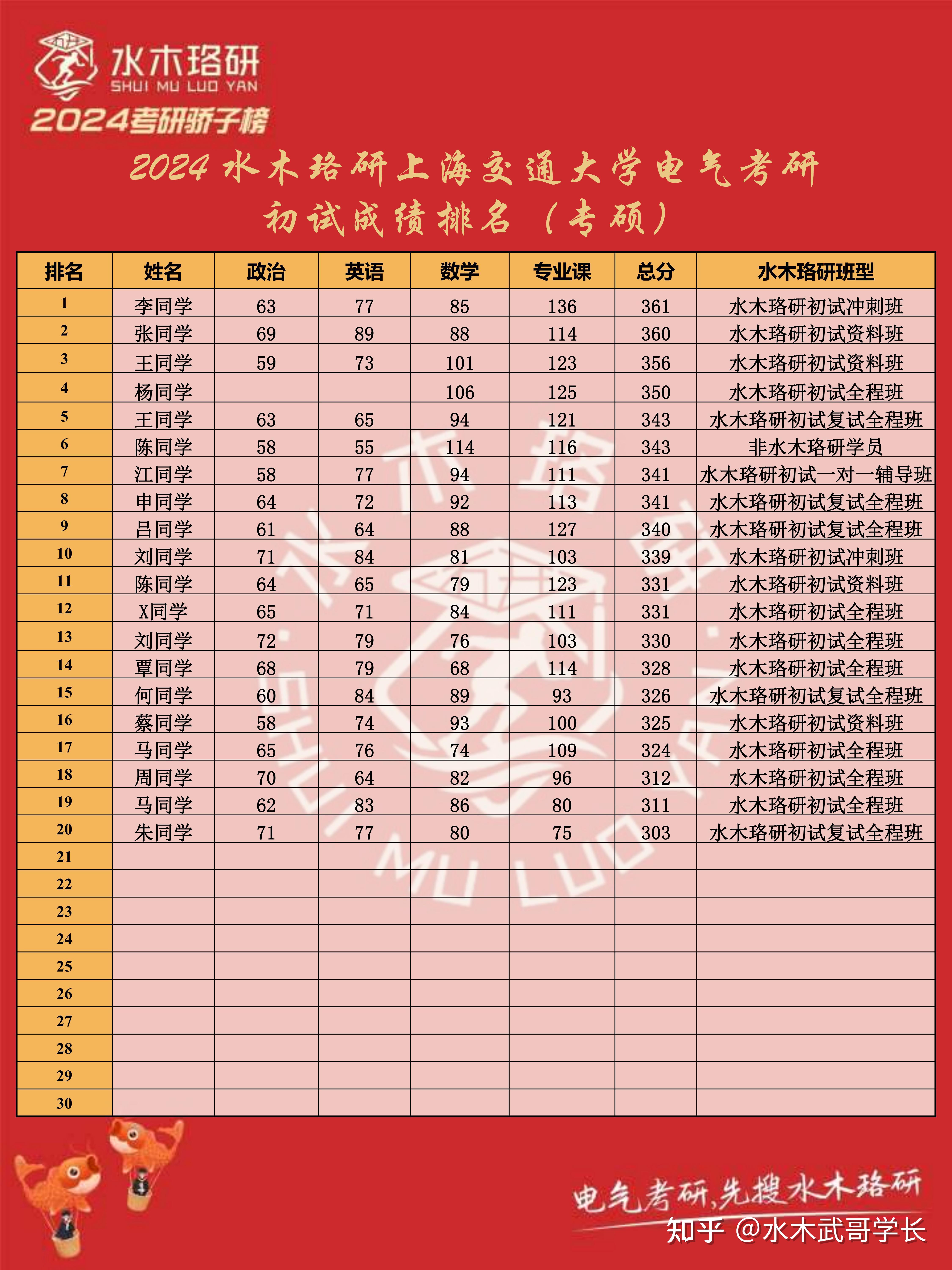
K. fascinated (过去分词伴随状语)
L. inspired (inspire的过去分词,“被激发的”)
M. excitement (填入名词)

干货太多感觉看不过瘾吗?那就关注“聚英考研网”,公众号会话窗口回复关键词“经济学人”,查看更多往期文章集锦哦~
标签: #2024年考研英语试卷

